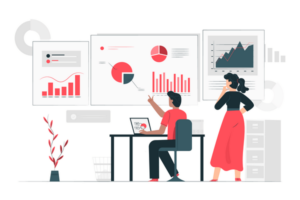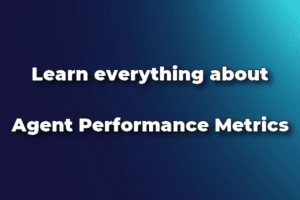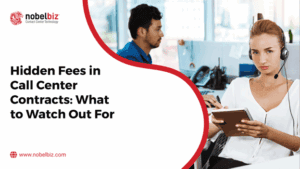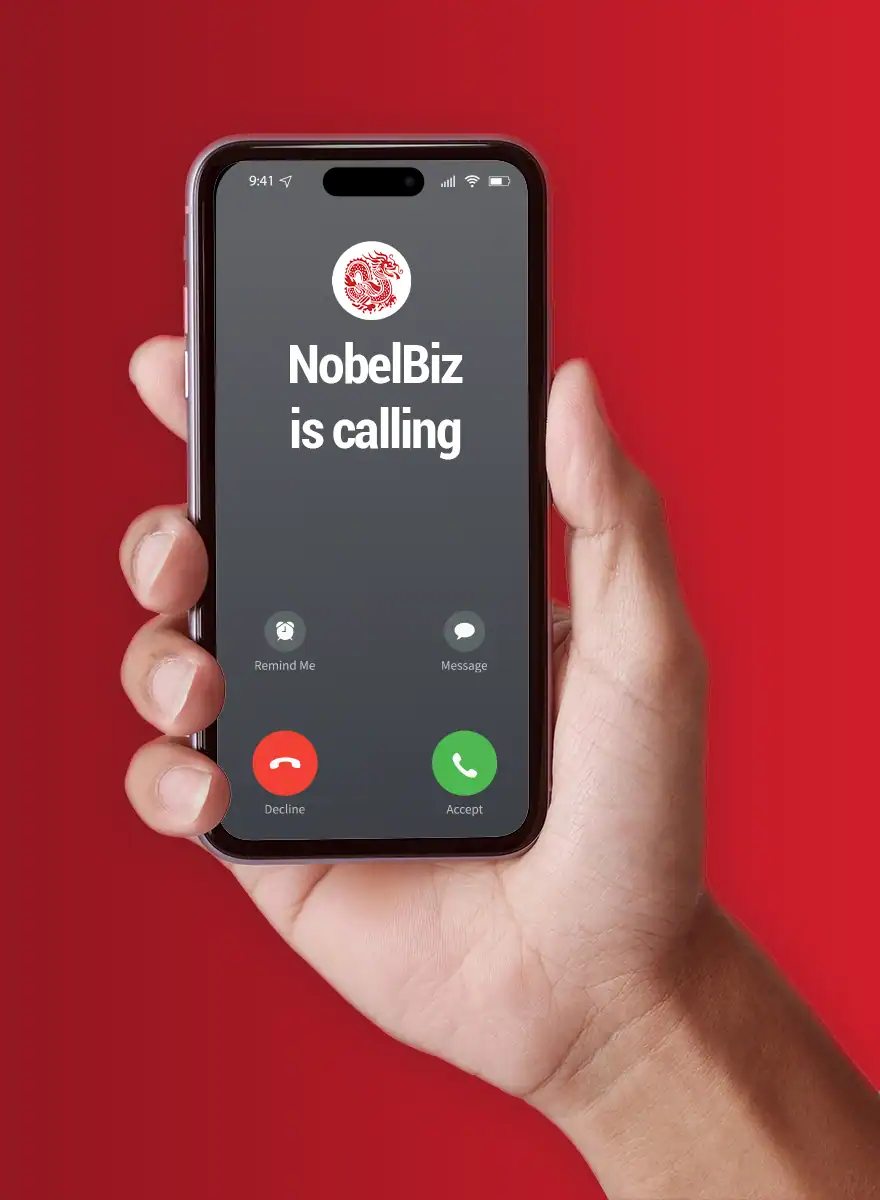To properly manage your teams and fulfill your customers and business objectives, you must monitor many KPIs. However, with the volume of calls and data generated on a daily basis in contact centers, managers and supervisors frequently feel overwhelmed.
The metrics that are appropriate for your organization will serve as your compass. A compass that provides your managers and supervisors with direct visibility into your data, and particularly into your team’s performance. In this article, we will examine the most critical agent performance indicators and how to manage them in contact centers.
Before defining your Agent performance metrics, define your contact center goals
Analyzing a KPI only because the competition does it is pointless. Every company is different and objectives must be stated beforehand to have a concept of “good” or “bad” contact center agents’ performances.
That is why managers and supervisors must define contact center objectives that are:
- Specific: the goal should be obvious, concise, and specific.
- Measurable: We must guarantee that the goal can be quantified.
- Achievable: By establishing milestones, you may guarantee that the goal is reachable for your agents.
- Realistic: the target must be attainable while taking into consideration the type of campaign, your technologies, and your targets.
What are the right call center agent performance metrics to monitor?
As a manager, one of your most significant responsibilities is to analyze and understand your team’s performance. As you will be able to make specific decisions and thus enhance the outcomes and reach the stated targets by monitoring KPIs (Key Performance Indicators).
This begs the question: how do you choose the correct KPIs to assess your agents’ performances?
1. AHT – The Average Handling Time in call centers

The average handling time is the amount of time it takes for a customer to interact with an agent in a call center. This includes the time the customer is on hold, the time the agent talks to the customer, and the time the agent has to write down the outcome of the interaction.
A lower AHT can be a sign that more resources are being used. There will be more calls per agent and more income for your organization. This call center KPI can help you figure out how good your service is, how well your team works together, and if an agent needs more training to quickly solve customer problems.
However, and this is the misconception, fast service doesn’t imply a good customer experience. That’s why when you are managing the average handling time (AHT), you need look at it very carefully. Rushing customers to the phone can have drastic effects – customers can end up confused and dissatisfied.
2. FCR – First Contact Resolution for inbound contact centers
First Contact Resolution (FCR) is an important metric for support or customer service centers. Whether it’s a phone call, this metric shows how many support requests are resolved right away. If it’s an e-mail, this metric shows how many support requests are answered right away.
In the contact center industry, the FCR shows how well your team does at responding to and solving customer service issues on the first interaction. This rate is usually used to figure out how happy customers are with a company first foremost. And second, how well the agents are performing.
3. Active call waiting
The active call waiting metric gives you as a manager and your team a view of the number of calls currently in queue.
Keeping an eye on this number will help your teamwork at the right pace. As a manager, you need to constantly monitor this metric, to make sure that traffic is going where it should be for the business and also to get real-time information about your team workloads.
4. After-call work time
The after-call work time calculates the time required for call center agents to perform their tasks following each call. This indicator enables managers to assess agents’ success in performing needed post-call work and to determine how much time should be devoted to post-call work.
5. Waiting time
While placing client calls on hold is never desirable, not all calls can be addressed immediately in a busy call center. This metric provides managers with an overview of the average time a caller waits to speak with a call agent.
6. Repeated calls
The repeat calls measure enables call center managers to track recurring issues during support calls. When certain issues happen frequently, teams can prioritize their efforts to ensure that the fix benefits the greatest number of customers. This is why managers can help in reducing the total number of incoming support calls.
7. Time lost due to technical issues
Unfortunately, technology does not always perform as planned. As a manager, it is critical to recognize how much downtime has happened and to be able to pinpoint the sources of this lost time. This measure provides managers and call centers with information about the total amount of downtime caused by technical difficulties.
For contact centers that want to enhance their metrics without downtime. NobelBiz offers a voice carrier network specially built for call center traffic, offering you the best quality calls, the lowest rates, the best telephony network services with 24/7 expert support.
How to evaluate call center agent performance?
Now that you know the most essential KPIs for managers. You must know how to properly and accurately evaluate your call center agent performance. From a technological point of view, you can evaluate your call center agent performance with 2 tools:
1. Call center agent performance dashboard

A contact center supervisor or manager is only as effective as his or her ability to know everything about his team. And the best way to track your team is through the supervisor dashboard.
Indeed, a dashboard can quickly access your team’s performance data: track your inbound and outbound calls, repeated calls, after work-time, etc. All from a unified and easy-to-use platform.
Monitor your team’s performance and keep an eye on all your data and number. Filter results by team or agent. Additionally, track the average call duration, the percentage of missed calls, and the average wait time to better understand your customer interaction.
2. Agent Quality performance monitoring
Before developing a quality management strategy, as a manager, you should start by determining what to measure. Then, once you have completed your assessment, you can define the objectives you wish to accomplish.
This entails identifying the critical components of each customer interaction to offer an amazing customer experience.
Here are some tips for monitoring your call center quality:
Call recording
Call recording software is quite handy for monitoring contact center agent performance. These tools enable you to monitor the level of attention customers receive and your agents’ behavior during each situation.
Customer Feedback
The simplest, quickest, and most convenient method for managers to evaluate their teams is a satisfaction survey. Typically, this type of quality control is performed following a call.
Agents will inform the customer that after the call, he can evaluate the level of attention received. And the call will be switched to a menu of options allowing him to rate the level of service he received.
Controlling agents
A critical tip for monitoring contact center quality is to address agent failures that degrade both the call’s quality and client experience. In an ideal world, the agent would be alerted of errors and instructed on how to remedy them, and would monitor the agent to ensure that he or she understands the problem. And that’s where your coaching ability as a manager comes in.
 The capacity to empathize is thought to be inherent in all people and, as such, is a critical component of efficient customer service in the call center industry. Naturally, some people are more adept at it than others. As a result, the issue arises: can call center agents training help them to be more empathetic? Learn from our podcast series, First Contact: Stories of the Call Center.
The capacity to empathize is thought to be inherent in all people and, as such, is a critical component of efficient customer service in the call center industry. Naturally, some people are more adept at it than others. As a result, the issue arises: can call center agents training help them to be more empathetic? Learn from our podcast series, First Contact: Stories of the Call Center.
Improve call center agent performance in 3 steps
At this point, you have a better view of how to pinpoint and track the right metrics for your teams. But the last piece of the puzzle is knowing how to improve your call center agent performance. And this is where your managerial and coaching skills come in.
1. Time tracking
As a manager, you must pay careful attention to your team’s time tracking. Time tracking is the process of calculating your employees’ work hours. It might seem like a no-brainer but this provides a crystal-clear picture of your employees’ and teams’ working hours.
Furthermore, you’ll be able to analyze each member of your team’s workload and handle any inconsistencies between the volume of work and the amount of time available, which can identify over-or under-staffing issues and increase performances.
2. Absenteeism
Although your contact center’s absenteeism rate is almost certainly previously monitored, keeping this number in mind is critical. The frequency with which your teams fail to report to work is critical, as an increase in this rate will directly affect your performance. This rise could be attributable to a variety of factors; you must determine which ones they are to reduce the rate and restore normal functioning.
Take note that a rise in absence could be the result of a team malaise or a negative social climate within the firm.
3. Level of well-being
We all know: a happy agent is committed, motivated, and therefore successful! As a manager, you must therefore constantly assess your teams’ level of well-being.
As a best practice, it would be better to monitor this metric at least once a week; this way you can easily identify the source of the problem. When your level of well-being is low, do not be afraid to communicate with your teams. Additionally, you can do an individual evaluation with each member of your team to ascertain and tackle the reasons.
 The Call Center Stress syndrome has been identified through numerous studies aiming at finding the cause of high absenteeism in the Call Center industry. Learn more from our webinar on mental health in Call Centers by asking Dr. James Diefendoff Ph.D. his opinion on the Call Center Stress Syndrome.
The Call Center Stress syndrome has been identified through numerous studies aiming at finding the cause of high absenteeism in the Call Center industry. Learn more from our webinar on mental health in Call Centers by asking Dr. James Diefendoff Ph.D. his opinion on the Call Center Stress Syndrome.
The main takeaways from agent performance metrics
In an ideal world, you’d track the activities that have the most impact on the client experience. But not all contact centers and businesses are the same, which also implies different metrics.
No matter which metrics you choose to monitor for your agents performance, always keep in mind:
- The speed with which agents may resolve client concerns and complaints.
- The number of missed calls as a result of operator unavailability.
- The average amount of time your agents spend on the phone compared to industry standards.
- At each point of the customer journey, the level of client happiness.
At NobelBiz, our mission is to keep businesses running while sustaining excellence in performance.
With over two decades of experience in telephony network services and contact center solutions, we provide on-demand customer assistance and a consultative approach to best practices in contact center industry. That is why we are referred to as the industry’s promise keepers.

Abdelmounim Benharouga has always had a strong passion for writing and digital marketing. He started as a Digital Content Writer part of marketing department then moved to being Customer Success Manager for the African Region within the Nobelbiz team.







